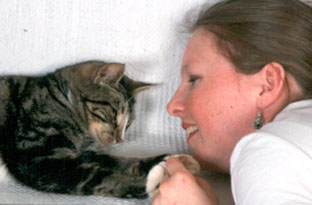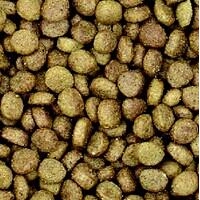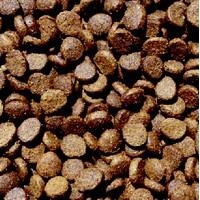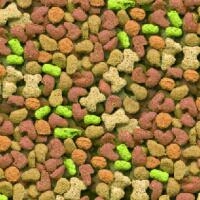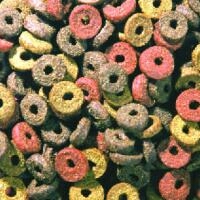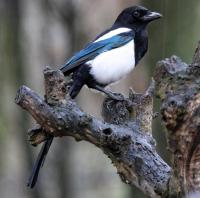- Home
- FAQs
- Customer Video Gallery
- Customer Photo Gallery
- Bird Facts
- Bird Food Blog
- Bird Information
- Feeding Advice
- Small Animal Information
- A to Z of Guinea Pigs
- A to Z of Hamsters
- A to Z of Rabbits
- Basic Care for Guinea Pigs
- Basic Care for Hamsters
- Basic Care for Rabbits
- Basic care for Chinchillas
- Basic care for Ferrets
- Basic care for Gerbils
- Basic care for Mice
- Basic care for Rats
- Buying a Healthy Small Animal
- Does your Reptile need a Licence
- Equipment for Ferrets
- Equipment for Hamsters
- Equipment for Mice
- Equipment for your Chinchilla
- Equipment for your Gerbil
- Equipment for your Guinea Pig
- Equipment for your Rabbit
- Keeping a House Rabbit
- Dog Information
- Cat Information
- Customer Information
- Fat Balls
- Suet Pellets
- Straights
- Seed Mixes
- Suet Treats
- Mealworms
- Bird Feeders
- My Account
Cats Vital health signs
Is your cat in great shape or a bit of a cat-astrophe? Suss out those vital signs that denote a fighting-fit feline friend.
Being agile, silent and swift, felines are natural hunters. They have sharp senses of hearing and smell, but their vision is less acute – especially at close range. Wild cats spend most of the day asleep, conserving their energy for hunting at night, and many domesticated adults maintain this behaviour pattern – but there’s a vast difference between the two!
Observing your cat’s normal appearance, behaviour and habits will help you determine when something is wrong: know your cat and you’ll know when he’s distressed or unwell!
Twootz provides a great range of complete dry cat food specially formulated to provide all the nutrients necessary to maintain a nutritionally balanced diet that helps promote good health and vitality. Manufactured in the UK from quality ingredients this range has something for every cat.
Body weight:
Wild cats rely on the prey they catch and eat, e.g. birds and mice, to preserve bodyweight, health and fitness; domesticated felines also catch and eat prey when the opportunity arises, in addition to receiving regular meals from their doting owners. Although it is said that cats regulate their own food intake, and therefore may be offered food freely, this is not always the case. Many domestic cats are overweight and this condition carries various health risks.
A cat’s ideal body shape will depend on his breed type, but when you run your hands over him you should be able to feel the outline of his ribs and pelvis without having to prod too deeply.
Coat and skin condition:
Cats are naturally hygienic animals, spending much time grooming and keeping themselves scrupulously clean and odour-free. A cat’s coat should be sleek and glossy, free from knots and matting. Long-haired cats may have difficulty grooming themselves efficiently, so they should be brushed daily to keep their coats in good condition.
A cat’s skin is normally extremely elastic: when a portion of skin is gently pinched between the fingers and lifted away from the body it should immediately fall back into place. Failure to do so may be an indication of dehydration, but it can also occur in cats who have lost a significant amount of weight.
Fleas:
When you part your cat’s hair, the skin underneath should appear pale pink or white, with no flaking. Flea infestation is a common problem that affects felines: you may not see the fleas themselves, unless your cat is suffering from a heavy burden, but they leave tell-tale signs in the coat via their faeces – small, black particles which dissolve when wet to form a reddish-coloured streak. If fleas are pestering your pet, ask your vet for an effective remedy.
Moulting:
Many domestic cats now moult (shed hair) all year round, due mainly to living in centrally heated homes, but hair loss should be evenly distributed and not leave any bald patches.
Tip: Many cats have a small area of skin in front of each ear which has only sparse hair growth – this is quite normal.
Ears:
The inside of the ears should be pink, clean and free from odour, without wax accumulation or signs of irritation.
Eyes:
A cat’s eyes should be bright and clear, without discharge or ‘weeping’. However, some Persian cats’ facial shape makes them prone to weeping, due to blocked tear ducts, so keep their eyes as clean and dry as possible. Pupil size (the central black area of the eye) will vary considerably depending on light conditions.
Cats have the ability to dilate their pupils widely in order to collect maximum light in dark conditions, along with a reflective layer (tapetum) at the back of their eyes that allows them to utilise all available light. This layer is seen as a fluorescent green reflection when a bright light shines directly into the eyes (Siamese cats have no tapetum, so their eyes reflect back a red colour).
Nose:
The tip of a cat’s nose should be damp to the touch; a consistently dry nose may indicate fever. There should be no nasal discharge, nor traces of wetness on the fur between the nose and upper lip.
While a small amount of dry, crusty material around the nose may indicate previous cat flu infection, it isn’t usually significant. If you are in any doubt, seek veterinary advice.
Mouth:
Healthy lining inside a cat’s mouth is smooth and a pale pink colour. Cats are particularly prone to developing dental problems, especially if fed on soft food. A small amount of chalky deposit (tartar) at the base of some teeth may not be of concern, but dental attention may be required if your cat has bad breath, inflamed gums or a significant accumulation of tartar.
Water intake:
As cats have quite a low water requirement, tinned cat foods usually contain enough moisture to supply virtually all their daily need. Fresh, clean water should be available at all times, but cats fed on tinned foods are rarely seen drinking and a noticeably increased water intake may be a sign of illness.
Grass-eating:
Cats have a tendency to eat small amounts of grass, even though this often makes them vomit. If this normal behaviour becomes persistent, or more frequent than usual, it may indicate gastric irritation, e.g. a fur-ball (hair-ball).
TPR:
A cat’s temperature, pulse rate and respiration rate (TPR) indicate his health status, so knowing your pet’s normal TPR helps you determine whether or not veterinary attention is required.
No such thing as an average cat:
These guidelines describe the average cat but, as we all know, there’s no such thing! You know your cat best and will realise if he is not quite himself. Checking him over regularly will help you spot any problems quickly, as well as being excellent bonding time for you both!
IMPORTANT – PLEASE READ:
Although our experts always do their best to help, this service is not intended to be a replacement for a one-to-one consultation with your own vet. If you are worried about any aspect of your animal’s health, well-being or behaviour, always contact your own vet as soon as possible. Neither Wetnose nor its contributors can be held responsible for the consequences of people acting solely on the information given on this website without seeking appropriate professional advice.
Being agile, silent and swift, felines are natural hunters. They have sharp senses of hearing and smell, but their vision is less acute – especially at close range. Wild cats spend most of the day asleep, conserving their energy for hunting at night, and many domesticated adults maintain this behaviour pattern – but there’s a vast difference between the two!
Observing your cat’s normal appearance, behaviour and habits will help you determine when something is wrong: know your cat and you’ll know when he’s distressed or unwell!
Twootz provides a great range of complete dry cat food specially formulated to provide all the nutrients necessary to maintain a nutritionally balanced diet that helps promote good health and vitality. Manufactured in the UK from quality ingredients this range has something for every cat.
Body weight:
Wild cats rely on the prey they catch and eat, e.g. birds and mice, to preserve bodyweight, health and fitness; domesticated felines also catch and eat prey when the opportunity arises, in addition to receiving regular meals from their doting owners. Although it is said that cats regulate their own food intake, and therefore may be offered food freely, this is not always the case. Many domestic cats are overweight and this condition carries various health risks.
A cat’s ideal body shape will depend on his breed type, but when you run your hands over him you should be able to feel the outline of his ribs and pelvis without having to prod too deeply.
Coat and skin condition:
Cats are naturally hygienic animals, spending much time grooming and keeping themselves scrupulously clean and odour-free. A cat’s coat should be sleek and glossy, free from knots and matting. Long-haired cats may have difficulty grooming themselves efficiently, so they should be brushed daily to keep their coats in good condition.
A cat’s skin is normally extremely elastic: when a portion of skin is gently pinched between the fingers and lifted away from the body it should immediately fall back into place. Failure to do so may be an indication of dehydration, but it can also occur in cats who have lost a significant amount of weight.
Fleas:
When you part your cat’s hair, the skin underneath should appear pale pink or white, with no flaking. Flea infestation is a common problem that affects felines: you may not see the fleas themselves, unless your cat is suffering from a heavy burden, but they leave tell-tale signs in the coat via their faeces – small, black particles which dissolve when wet to form a reddish-coloured streak. If fleas are pestering your pet, ask your vet for an effective remedy.
Moulting:
Many domestic cats now moult (shed hair) all year round, due mainly to living in centrally heated homes, but hair loss should be evenly distributed and not leave any bald patches.
Tip: Many cats have a small area of skin in front of each ear which has only sparse hair growth – this is quite normal.
Ears:
The inside of the ears should be pink, clean and free from odour, without wax accumulation or signs of irritation.
Eyes:
A cat’s eyes should be bright and clear, without discharge or ‘weeping’. However, some Persian cats’ facial shape makes them prone to weeping, due to blocked tear ducts, so keep their eyes as clean and dry as possible. Pupil size (the central black area of the eye) will vary considerably depending on light conditions.
Cats have the ability to dilate their pupils widely in order to collect maximum light in dark conditions, along with a reflective layer (tapetum) at the back of their eyes that allows them to utilise all available light. This layer is seen as a fluorescent green reflection when a bright light shines directly into the eyes (Siamese cats have no tapetum, so their eyes reflect back a red colour).
Nose:
The tip of a cat’s nose should be damp to the touch; a consistently dry nose may indicate fever. There should be no nasal discharge, nor traces of wetness on the fur between the nose and upper lip.
While a small amount of dry, crusty material around the nose may indicate previous cat flu infection, it isn’t usually significant. If you are in any doubt, seek veterinary advice.
Mouth:
Healthy lining inside a cat’s mouth is smooth and a pale pink colour. Cats are particularly prone to developing dental problems, especially if fed on soft food. A small amount of chalky deposit (tartar) at the base of some teeth may not be of concern, but dental attention may be required if your cat has bad breath, inflamed gums or a significant accumulation of tartar.
Water intake:
As cats have quite a low water requirement, tinned cat foods usually contain enough moisture to supply virtually all their daily need. Fresh, clean water should be available at all times, but cats fed on tinned foods are rarely seen drinking and a noticeably increased water intake may be a sign of illness.
Grass-eating:
Cats have a tendency to eat small amounts of grass, even though this often makes them vomit. If this normal behaviour becomes persistent, or more frequent than usual, it may indicate gastric irritation, e.g. a fur-ball (hair-ball).
TPR:
A cat’s temperature, pulse rate and respiration rate (TPR) indicate his health status, so knowing your pet’s normal TPR helps you determine whether or not veterinary attention is required.
- Normal feline body temperature is 100F-100.8F (38C-38.5C)
- Healthy cats breathe at a regular rate of around 20 to 40 breaths per minute. There should be little chest movement associated with each breath and no involvement of the abdominal muscles
- Cats only breathe through their mouth in exceptional circumstances, for example if they are severely overheated, extremely distressed or suffering breathing difficulties, so panting is a real cause for concern
- A cat’s heartbeat can normally be felt in the front part of the chest, between the front legs, and it is more prominent on the left-hand side than the right. Rhythm should be regular, with the normal heart-rate being 120-180 beats per minute
- The best place to feel a cat’s pulse is on the femoral artery that runs along the inside of the thigh, however feline arteries are small so finding a pulse is more difficult than in a larger animal. An irregular heart-rate that is consistently too fast or too slow could be an indication of heart disease
- Cats can show few outward signs of heart disease, but if you are concerned your pet may have a heart problem, consult your vet
No such thing as an average cat:
These guidelines describe the average cat but, as we all know, there’s no such thing! You know your cat best and will realise if he is not quite himself. Checking him over regularly will help you spot any problems quickly, as well as being excellent bonding time for you both!
IMPORTANT – PLEASE READ:
Although our experts always do their best to help, this service is not intended to be a replacement for a one-to-one consultation with your own vet. If you are worried about any aspect of your animal’s health, well-being or behaviour, always contact your own vet as soon as possible. Neither Wetnose nor its contributors can be held responsible for the consequences of people acting solely on the information given on this website without seeking appropriate professional advice.




